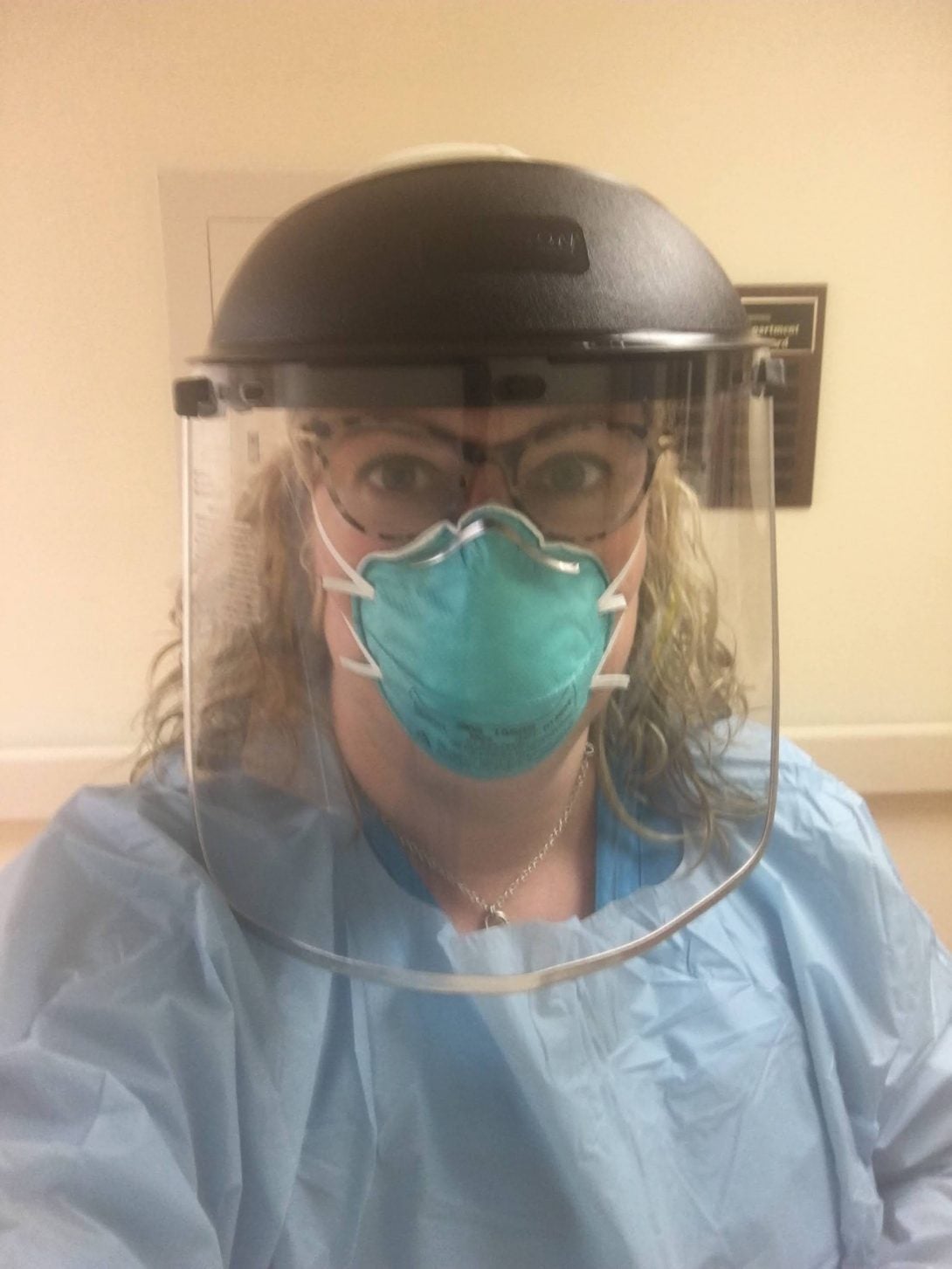‘Did I miss something?’
body copy

It had been four hours since the patient arrived in the ambulance bay, and Beth Todd, RN, PEL-CSN hadn’t left her side.
Todd was crammed in a small, hot room with seven people, all wearing protective gowns, gloves, and masks. The 50-year-old patient, a woman, was struggling to breathe, her skin was marbled and red. The team tried to intubate her, but her throat was so dry it took two tries.
It was March 2020, just as the COVID-19 epidemic was hitting the U.S. in full force. Todd, a Rockford DNP student, was working as a third-shift ER nurse. She was living in a pop-up camper in her driveway so she wouldn’t infect her family as she returned from work each day.
In that small room, Todd and another nurse worked feverishly to stabilize the patient, pouring in fluids, maintaining sedation, starting antibiotics, ordering labs, pushing pain medications and ordering restraints to keep her arms away from the tubes. The patient had eight IV lines.
When Todd handed off the patient to the ICU team, after five hours without a break, she disrobed from her COVID gear and immediately returned to the ER to tend to two, less urgent patients.
There, she learns the patient’s husband—who wasn’t allowed inside the hospital due to COVID restrictions—had been calling for updates. About an hour later, she heard a call for a “Code Blue” to the patient’s room. Her husband never made it to the hospital to say goodbye. COVID was determined as the cause of death.
“My teammates and I were devastated,” Todd says. “I was emotionally, physically, and mentally drained. I was overwhelmed, upset, sad and could not process what had just happened. And yet, I need to continue the last two hours of my shift.”
Todd says similar stories happened later, but this one stays with her.
“She was one of those patients where you ask, ‘Could I have done something better or different to change the outcome? Did I miss something? Could she still be alive today?’”
Todd shared her story as part of a class project and it was adapted for this report.